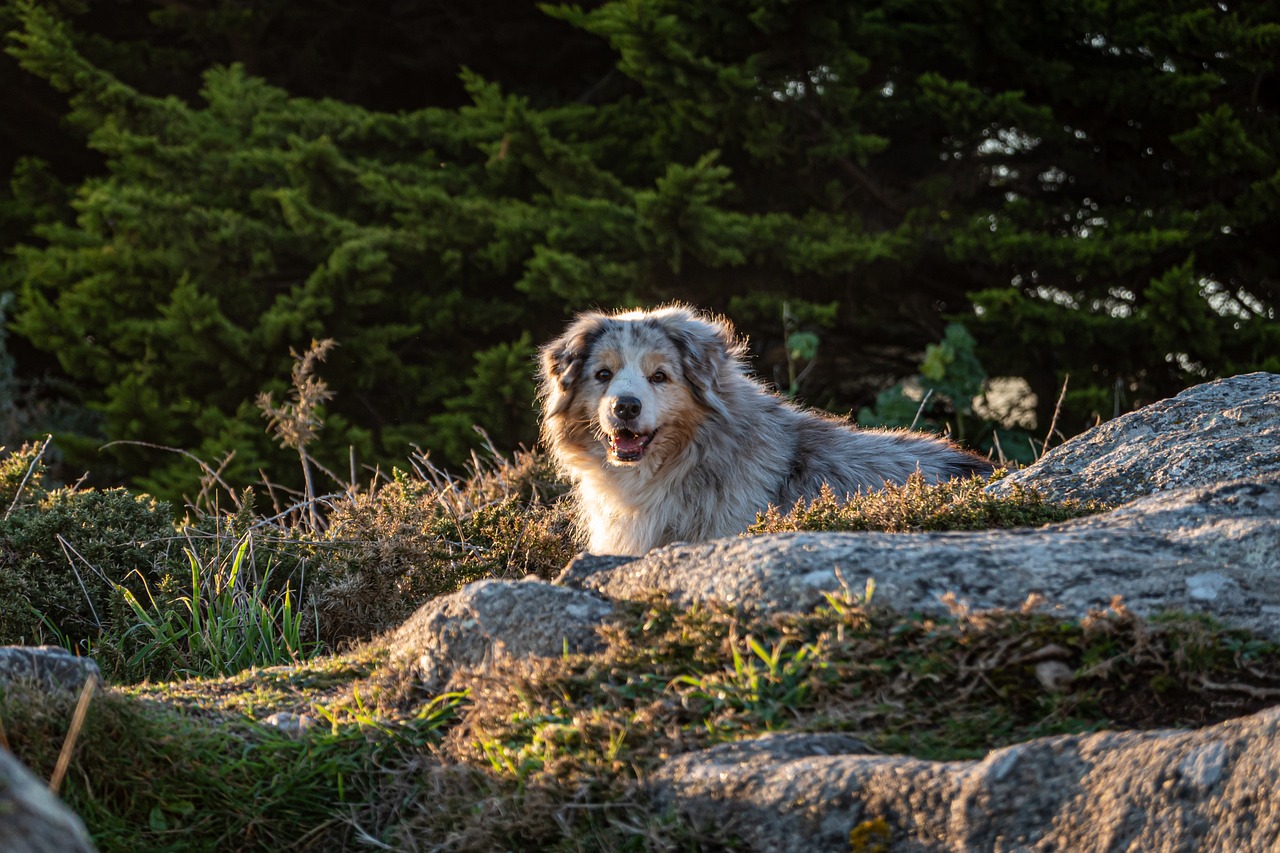Hide and seek is not just a human game; Many dogs enjoy this playful activity, showcasing their natural instincts, agility and intelligence. While all dogs have the potential to become hide-and-seek champions, certain breeds have mastered the game, using their unique skills and traits to excel. Whether it’s their stealthy actions, keen sense of smell, or simply their love of chasing, these breeds turn a simple game into an art form. From small terriers that sneak into the most unexpected hiding places to large hunting dogs known for their tracking abilities, these dogs make every round of hide-and-seek an adventure. Let’s learn about ten dog breeds that are experts at hide and seek, and the characteristics that make them especially adept at this beloved game.
1. Border Collie
Border Collies are renowned for their intelligence and agility, making them naturals at hide-and-seek. Their sharp minds quickly grasp the rules of the game, and they use their fast, graceful movements to hide and seek with remarkable efficiency. The Border Collie’s herding instincts also come in handy, as they skillfully guide themselves and others around obstacles and into hiding places. Their focus and determination make them relentlessly investigative, able to sniff out even the most cleverly hidden companions.
2. Beagle
Beagles, with their exceptional sense of smell and persistent tracking instincts, excel at the part of hide and seek. Originally bred for hunting, Beagles’ noses can lead them to almost any hidden object or person. Their compact size also allows them to explore a variety of hiding places that larger breeds cannot reach. Although their screams and barking while hiding can give away their location, their detection skills are virtually unmatched.
3. Jack Russell Terrier
Jack Russell Terriers are small, energetic dogs with a penchant for adventure, making them excellent at hide and seek. Their small stature allows them to squeeze into tight spaces, and their boundless energy keeps them enthusiastically engaged in play. Jack Russells are also incredibly smart and can often outwit their opponents by using clever tactics to remain hidden or outwit others. Their agility and stealth make them adept at both hiding and seeking, ensuring they are always one step ahead of the game.
4. Dachshund
Dachshunds, also known as Wiener dogs, have a unique body shape that makes them surprisingly good at camouflage. Their long bodies and short legs allow them to hide in hiding places that other dogs might overlook. Dachshunds are also known for their curiosity and determination, qualities that serve them well when searching for hidden friends. Despite their playful nature, they can be quite secretive, making them challenging to find when they decide to disappear.
5. Australian Shepherd
Australian Shepherds are intelligent, versatile dogs that love to play, with hide and seek being their favorite activity. Their herding instincts give them a strategic edge, allowing them to anticipate moves and plan their hide-or-seek strategies accordingly. Aussies are agile and fast, able to quickly cover ground or change hiding places if they think they are about to be discovered. Their intelligence and problem-solving abilities make them formidable opponents in any game of hide-and-seek.
6. Cocker Spaniel
Cocker Spaniels are playful and affectionate, with a habit of hide-and-seek that stems from their hunting background. Their medium size allows them to fit into a variety of hiding places, while their keen sense of smell helps them locate others. Cockers are also known for their gentle and patient nature, which allows them to wait quietly until the right moment to reveal themselves or patiently seek out their hidden companions.
7. Siberian Husky
Siberian Huskies are known for their mischievous nature and love of play, qualities that make them excellent at hide and seek. Their stamina and athleticism allow them to wander far and wide in search of the perfect hiding place or tirelessly search for others. Huskies’ thick coats can also help them blend into their surroundings, especially in snowy environments, making them efficient hiders.
8. Poodle
Poodles of all sizes are highly intelligent and trainable, qualities that make them adept and excellent at hide and seek. Their agility and speed allow them to quickly sneak into hiding places or chase away hunters with ease. Poodles are also problem solvers, able to detect potential places where someone might hide and use strategy rather than just their senses to win games.
9. Labrador retriever
Labrador Retrievers are friendly, energetic dogs that love games, including hide and seek. Their sociable nature makes them avid explorers, while their size and strength help them reach and explore a variety of potential hiding places. Labs are also incredibly smart, able to remember where players have previously hidden and use that knowledge to their advantage in future rounds.
10. Shetland Sheepdog
Shetland Sheepdogs, or Shelties, are small, agile dogs with a keen intelligence, making them great at hide and seek. Their herding background gives them the ability to strategize and think ahead, whether they are hiding or exploring. Shelties are also fast and agile, able to change direction and move rapidly to new hiding places if they feel they are about to be found.
With a unique combination of intelligence, agility, and playful temperament, these ten dog breeds are truly adept at hide and seek. Whether taking advantage of their physical characteristics or their natural instincts, each breed brings something special to the sport, making them delightful companions in this classic activity. More than just fun and games, hide and seek with these breeds showcases their incredible abilities and strengthens the bond between dogs and their human companions, turning every game into a memorable adventure.

